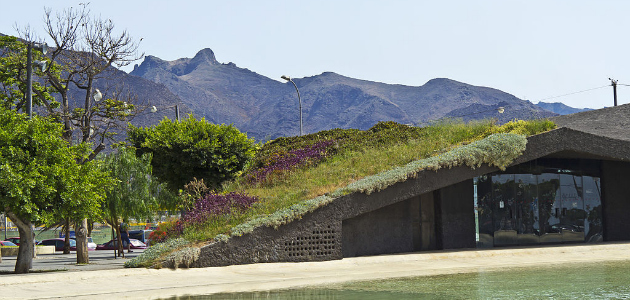In drawings and photography, buildings and spaces that humans create would typically seem the antithesis of the natural world. Building materials that come from the earth – wood, stone, clay, and so forth. But buildings can be dissected into specific, manufactured building materials of a certain human-determined size. These materials are used to make flat planes of walls, floors, and ceilings. They hold water and air where they typically don’t go. And they create a shelter in the middle of (in spite of?) the outside world. Most illustrations of the built world are in a complete contrast to the visual qualities of the natural world. Architectural drawings provide information on how to build buildings, but they can also be more than that. They can provide even more subtle information about the style of architecture, the quality of the space of the building, or how different materials, colors, and textures work together. But what happens when architecture is trying to tell us something else that goes against its man-made nature? Nature has forever been an inspiration to humans in fine art and music. Architecture is no exception – and there are three instances where nature is directly involved in visualization of the built environment.
Literal
An example of the built environment that uses a somewhat superficial application of nature is the Plaza de Espana by Herzog + de Meuron in Santa Cruz de Tenerife, Canary Islands. Around a man-made water basin, two pavilions in the plaza feature green roofs to pay homage to the rich environment of the islands themselves. We can see the incredible ecosystems of the Canaries by just visiting the islands themselves. Having these green roofs at the Plaza isn’t really necessary, but they provide an aesthetically pleasing element – by having nature literally applied to the surface of the structures. This application of actual “nature” – plants in this case – has a slight bit of symbolism to it, mirroring the environment around it. But the application is only surface deep.
Figurative
Better-known glimpses of the natural world into the built environment are seen in examples of figurative illustrations of nature in architecture. Some of the best examples of figurative or symbolic applications can be found the work of Frank Lloyd Wright. Taliesin West, Wright’s western home and studio – takes direct motifs from the layered cliff and low, rocky hills across the desert. The materials, textures and colors are also taken directly from the site.


Minimal
A third approach seemingly takes the attention away from the built world entirely, While we are used to the ego of the architect and it illustrated by monumental building forms, these examples go against this idea by making the building’s impression in the natural environment as minimal as possible. This light touch on the earth is displayed in Philip Johnson’s Glass House from 1949. This house “floats” in nature as the floor is suspended 10 inches off of the ground. The glass exterior and open floor plan use the views of nature as the home’s walls.












